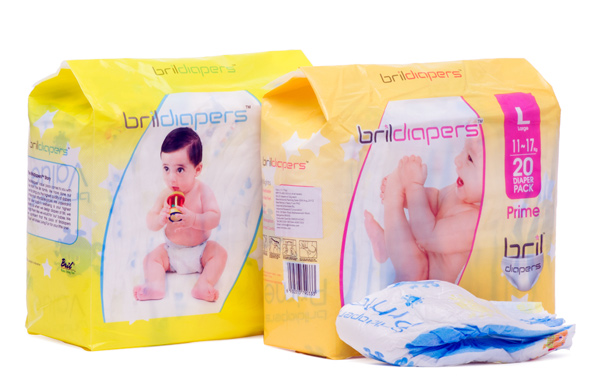Learn More, Study Less using Holistic Study Techniques
We all know that our education system is archaic, flawed and is based on rote-based memorization. Students have to by-heart tons and tons of information and reproduce it during exams. Not only is blind memorization by repetition energy sapping for school and college students, it is an ineffective learning process. More often than not, blind memorization leads to lower grades and self-confidence. Even if a student manages to get better grades by memorizing, none of the concepts have been understood well and hence nothing sticks once the exam is over!
This young graduate called Scott Young has researched and proven that smart students (him included) don’t spend hours memorizing stuff, but subconsciously use techniques that work with the way the neurons in their brains learn concepts. In fact adults too have the right-brain visual ability to learn things faster like babies, but our schools and colleges curb that natural way of learning. Scott calls this the holistic approach to learning. Based on his personal experience and experience and results seen by thousands of students around the world he has devised a comprehensive study technique course called Learn More, Study Less. His complete video course, ebook and Ninja Edition (which comes with 2-months free of Learning on Steroids which offers weekly emails, learning forums and access to Scott if a student wants coaching or help) have already helped thousands of students across the world.
Scott’s course Learn More, Study Less and The Holistic Learning Strategy focusses on Constructs, Models and Highways from a theoretical perspective. Without getting too technical, a construct is defined as a set of tightly interlinked instructions in your brain, and if for example a person’s language construct is highly developed they will find learning languages much easier. So, if constructs are the door to holistic learning, Models are the key. Models are smaller constructs which are portable. Models could be visualizations that help you start learning a concept and build a construct. Finally Highways link the constructs which are like buildings or a group of buildings in a city. Highways are essential to link concepts and draw parallels, this is what makes you creative and think creatively as a result of the Holistic Learning Process in Learn More, Study Less.
Now that we have the theory in very basic terms behind us, how does Learn More, Study Less help students Learn More effectively and at a much faster pace to improve their grades and understanding of subjects? What is the process and what are the experiential tools and techniques that are addressed in this course?
1. Acquiring Ideas
- Speed Reading
- Flow-Based Note Taking
2. Linking Ideas
- Metaphor
- Visceralization (Visualization plus relating to ideas)
- Diagraming
3. Handling the Arbitrary
- Linking
- Pegging
- Information Compression
4. Extending Ideas
- Practical Usage
- Model Debugging
- Project-Based Learning
At Bril we have gone through Scott’s ebook and strategies and believe that every high-school student, undergraduate college student, post graduate college/university student or anybody who needs to learn effectively and much faster than what they are used to would really benefit from his program. We at Bril promote new concepts to Make Living Fun for people and this guy Scott has managed to finish a 4-year MIT course in 12 months, and we truly believe he can add immense value to students by helping them really learn, learn much faster, score better marks in exams and get deeper understanding of concepts.
Please Click Here to learn more and purchase Learn More, Study less Video Courses or just the eBook.
Please note that students / parents from world-over can buy this product after reading this post. While Bril does thorough due diligence on all products prior to endorsement, Bril may not be held liable or responsible for results, customer support issues, failure to honour money-back guarantees etc. by the Vendor (Scott Young) who Bril is not associated with. No partnership exists between Scott Young and Bril.
Disclaimer: The links in this post are affiliate links and Bril will earn a commission if a sale happens by clicking on the links in this post.

 If your older child is sleeping between you and dad as in the case of many Indian families, it becomes important to address the sleeping situation well before your due date arrives. This is important so that your older child does not feel displaced by the baby. So if you have plans to move your child to a different room, begin right away. If your older child must begin preschool, then ensure that it does not coincide with the arrival of the new baby. You certainly do not want your older child to associate being thrust in the care of someone else with his new sibling’s arrival.
If your older child is sleeping between you and dad as in the case of many Indian families, it becomes important to address the sleeping situation well before your due date arrives. This is important so that your older child does not feel displaced by the baby. So if you have plans to move your child to a different room, begin right away. If your older child must begin preschool, then ensure that it does not coincide with the arrival of the new baby. You certainly do not want your older child to associate being thrust in the care of someone else with his new sibling’s arrival. At this time, it is especially important to assure her that she can never be replaced and that the new baby is going to love her and look up to her more than anyone else. Assigning a protector kind of role to your older child is much better received than telling her that she is going to have someone to play with.
At this time, it is especially important to assure her that she can never be replaced and that the new baby is going to love her and look up to her more than anyone else. Assigning a protector kind of role to your older child is much better received than telling her that she is going to have someone to play with. When a baby learns to walk, it’s a big step towards being independent. Walking is a major developmental milestone for a baby and almost all mothers remember when their babies took their first steps. It’s interesting to note that most kids make those early steps on tiptoe.
When a baby learns to walk, it’s a big step towards being independent. Walking is a major developmental milestone for a baby and almost all mothers remember when their babies took their first steps. It’s interesting to note that most kids make those early steps on tiptoe. Sleep is crucial to a baby’s development. Newborn babies usually sleep for about 17 to 18 hours
Sleep is crucial to a baby’s development. Newborn babies usually sleep for about 17 to 18 hours 

